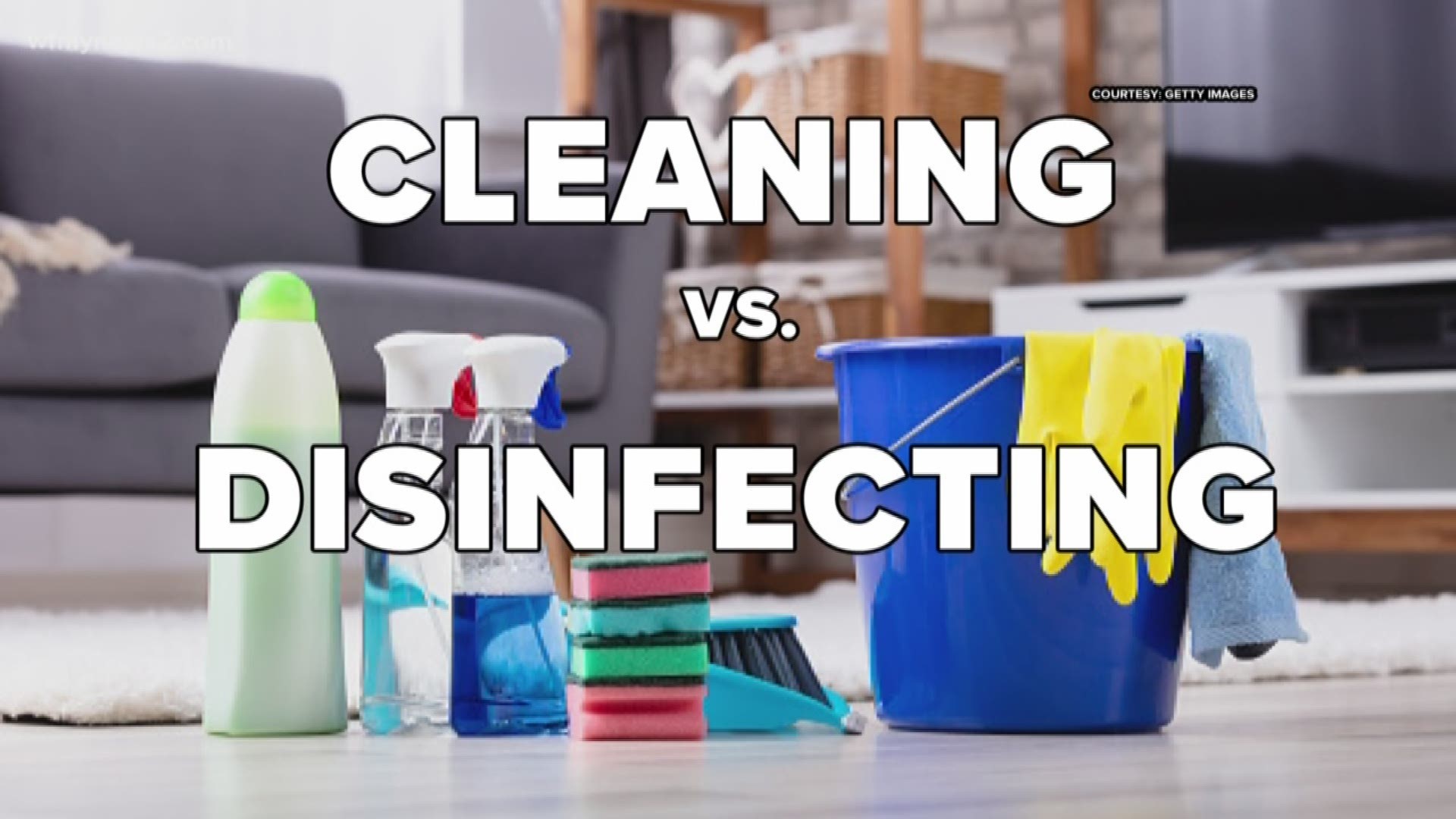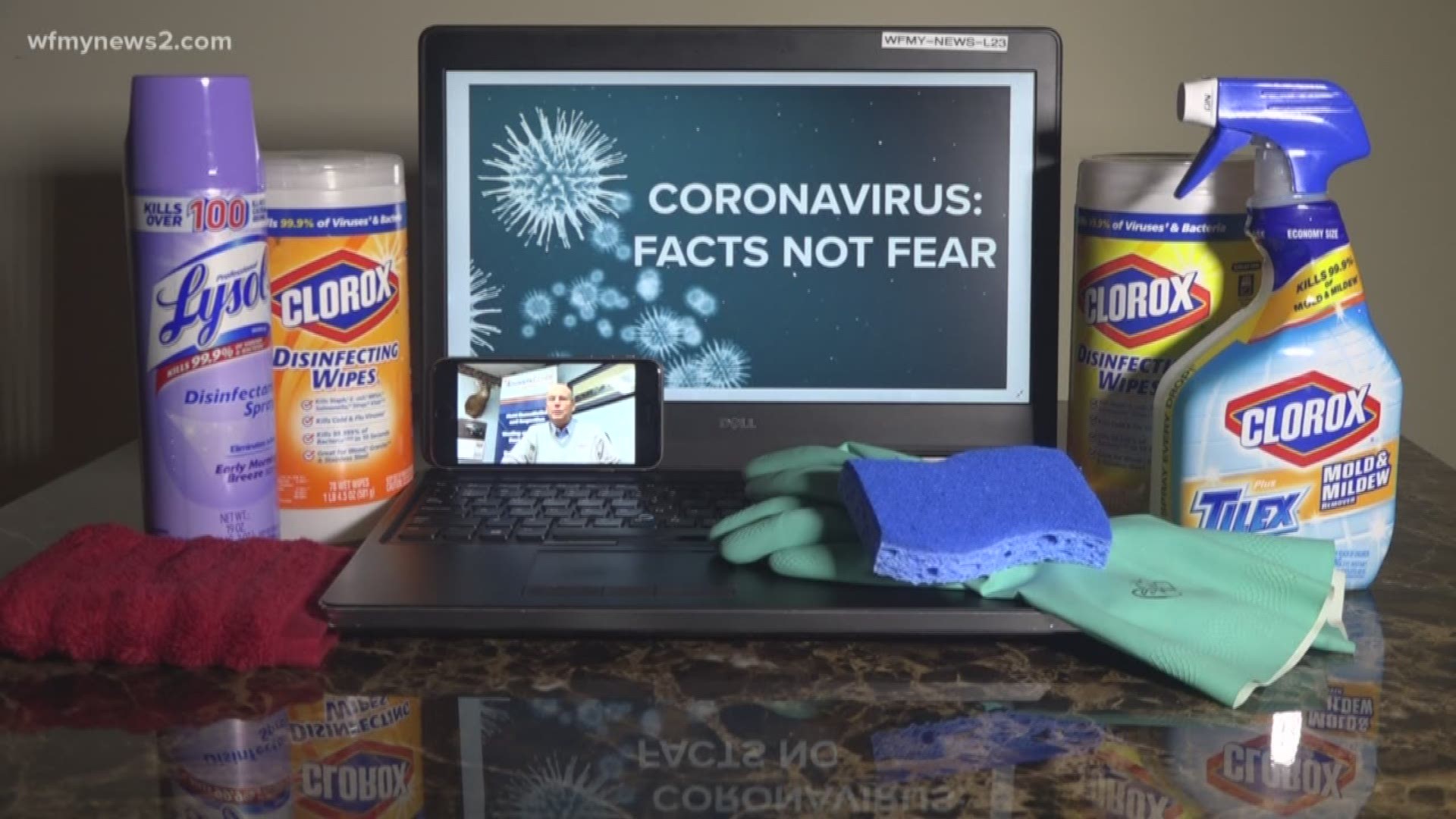GREENSBORO, N.C. — It's still unclear how long COVID-19 can survive on surfaces. But, health studies suggests, coronaviruses may persist on surfaces for a few hours or up to several days. If you think a surface may be infected, health officials say, you should clean it with simple disinfectant to kill the virus and protect yourself and others. But, do you know the difference between cleaning and disinfecting?
Cleaning is the removal of germs, dirt, and impurities from surfaces. It does not kill germs. Disinfecting kills germs on surfaces or objects. It works by using chemicals. Cleaning and disinfecting surfaces properly is important to help limit the risks of germs and infections. The idea is to clean dirty surfaces first, then disinfect the area.
The CDC recommends cleaning and disinfecting frequently touched surfaces daily. That includes tables, doorknobs, light switches, countertops, handles, phones, keyboards, toilets, faucets, and sinks. To properly clean dirty surfaces, you should use detergent or soap and water. You can also use a bleach solution by mixing 5 tablespoons bleach per gallon of water. To disinfect, the CDC says, most common EPA-registered household disinfectants should be effective.
Before cleaning and disinfecting, you should wear disposable gloves for protection. When finished, disposable gloves should be tossed out. If you plan on using reusable gloves, the CDC says, the gloves should only be dedicated for cleaning and disinfection of surfaces for COVID-19. You should not use the gloves for other household purposes. Once you're done cleaning and disinfecting surfaces, make sure you wash your hands with soap and hot water for at least 20 seconds. For more information on cleaning and disinfecting properly, click here.


